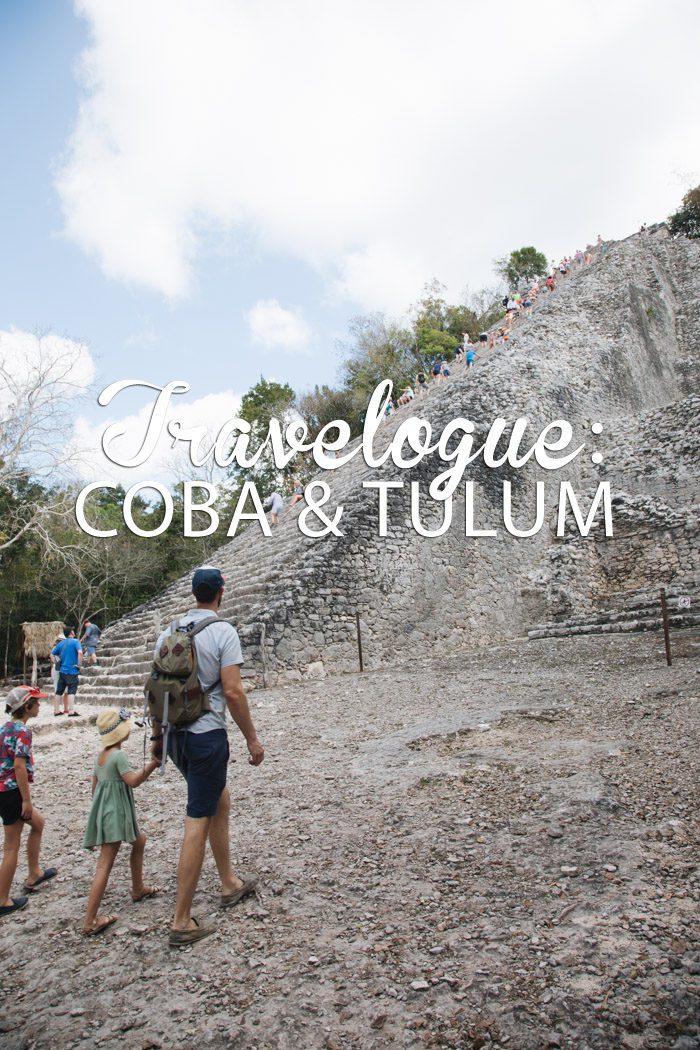
It was ten years ago that Aron and I took a two-week road trip around the Yucatán Peninsula, but I still recall how incredible it was: with visits to ancient Mayan temples and swimming in the sinkholes—cenotes—that connect to underground rivers under the limestone. When we decided to spend a week in the region over spring break, I knew we’d need to devote at least one day sharing just that with the kids.
Our itinerary had been to split the week between Isla de Holbox, a small island to the north of Cancun, and the resort area of Mayakoba, so we would add a visit to the ruins of Coba—a Mayan site we hadn’t previously visited—at the halfway point. But ever since a car break-in years ago in France, we’ve felt hesitant to leave suitcases in the car while sightseeing, so we decided to take a night from the island stay and add it in Tulum so that we drop our bags and save ourselves the worry. It also meant that we could arrive at the ruins just as they were opening. Finally, I confess I was curious to see just how much Tulum had changed since that trip so many years ago.
So we left that little paradise of Holbox around midday and ferried back to our rental car, only to pull into Tulum a few hours later…
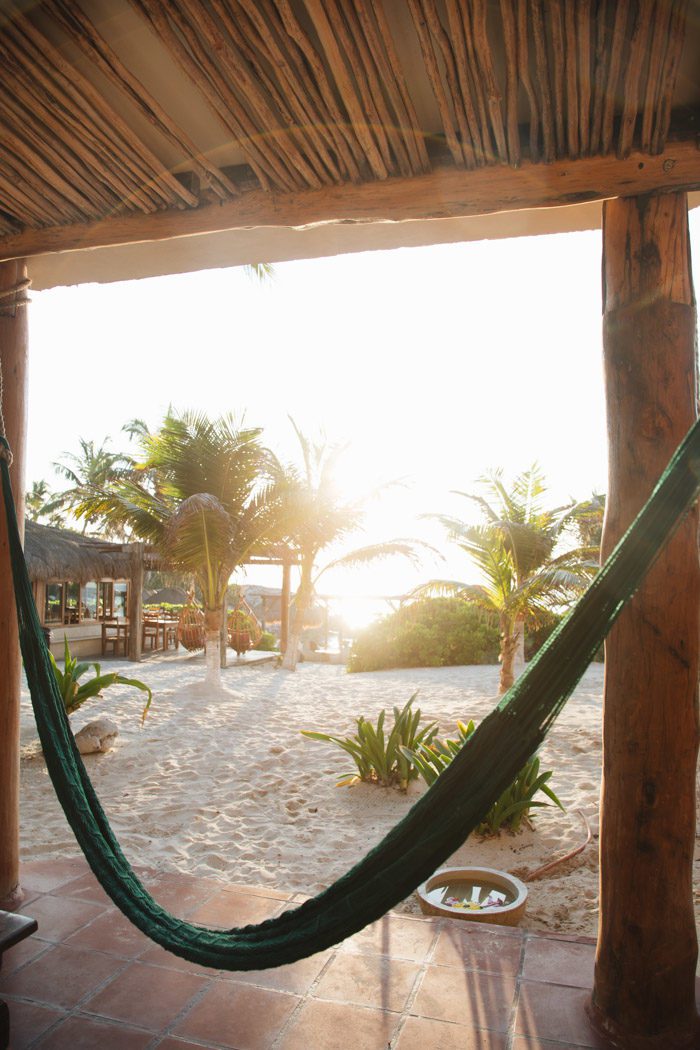
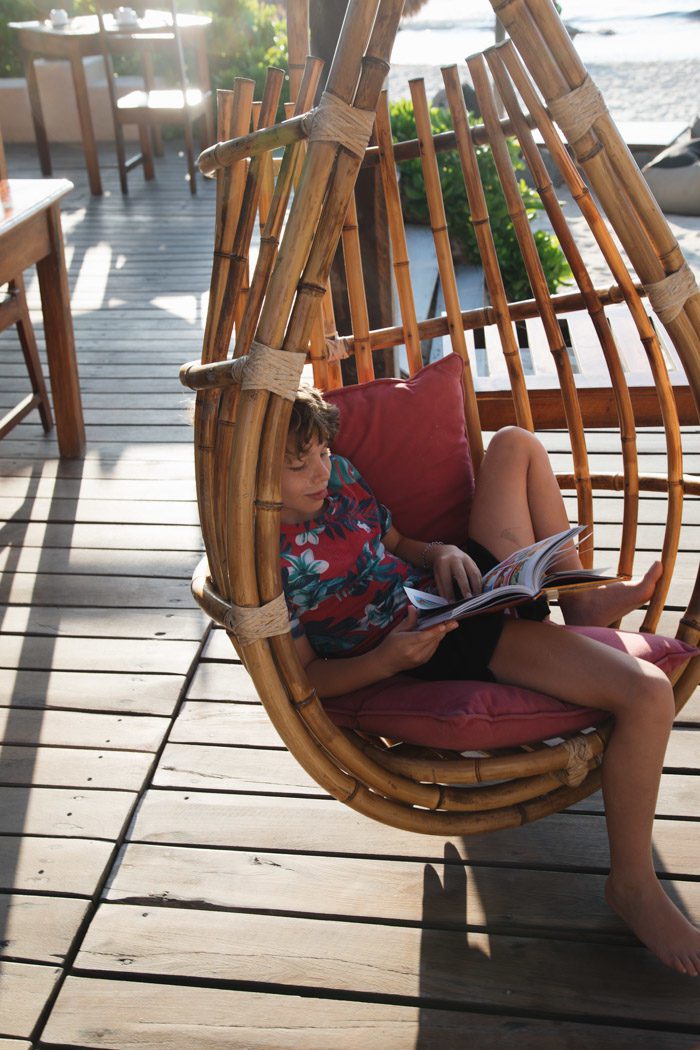
We had considered basing ourselves at a hotel in Cobá, and in hindsight that would have been the most efficient—one could just stay in Holbox until the afternoon and arrive at a hotel in time for dinner and a night’s rest. Instead, we drove about 30 or 40 minutes beyond to Tulum, through the commercial core to the beach. As the main road reaches the coastal one, there are wooden signs with hotel names on posts and right away I recalled that where there were now half a dozen posts, there once was one.
Our hotel, Piedra Escondida, was at the northern end of the stretch—a nice hotel with its own little cove, that’s been there for twenty years. It was nicer than we needed for just the one night, really, but we appreciated being on the water so that we could just spend the rest of the day walking along the shore until dinner.

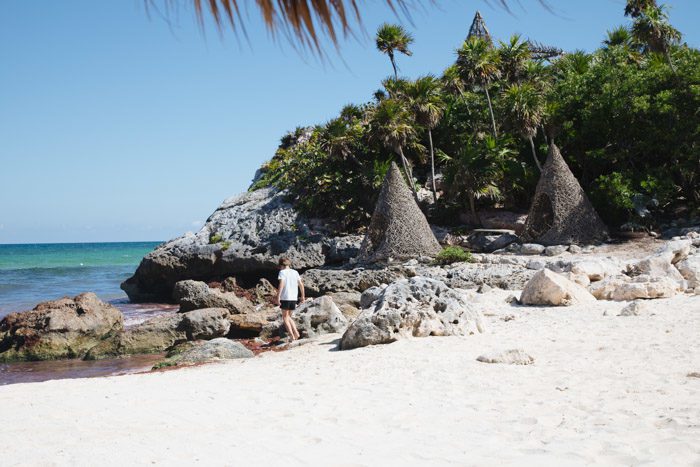
Of course, that meant choosing exploring over just relaxing—something that actually would have been quite easy there, as they had toys set out in a box for the kids and some little shade structures that both Hudson and Skyler dashed into immediately.
Swimming, however, was not an option there, as the wind was pretty strong and the waves were coming directly onshore. We noticed that there was another small cove just south—in front of the hotel El Pez—that probably seemed like the most safe, protected spot for small swimmers.
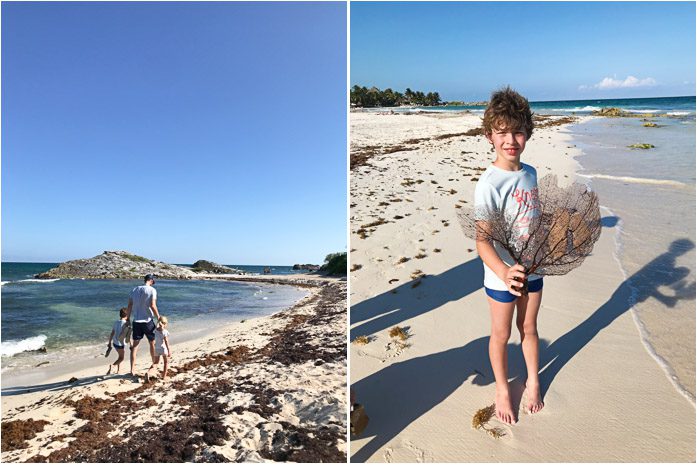
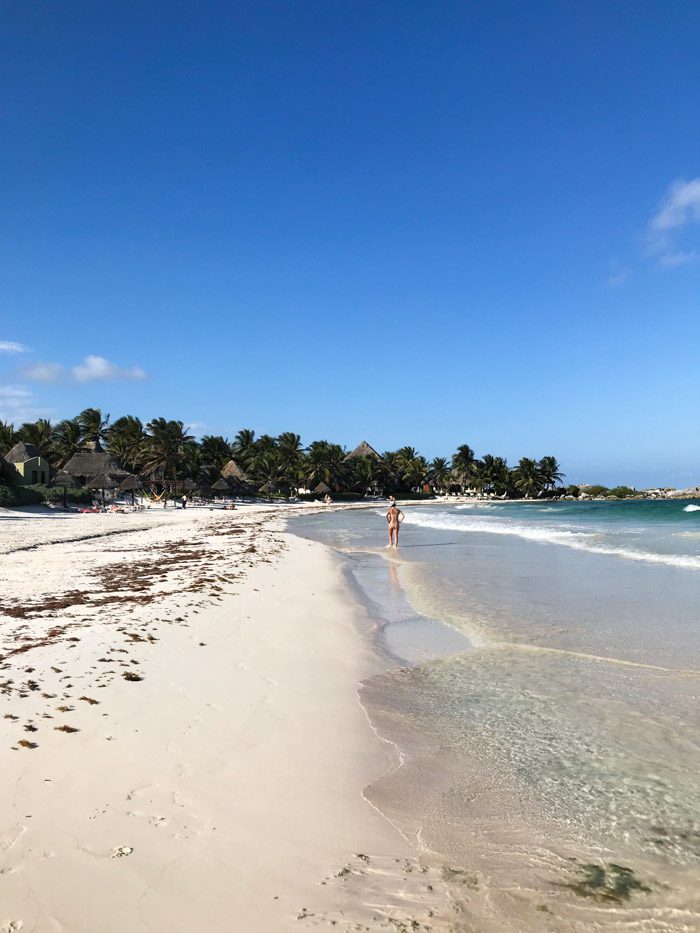
I’d read so many horror stories about Tulum’s overdevelopment that I was expecting the worst, but it was as gorgeous as ever on the surface. I’m sure the stories are all true—that the crowds have over-taxed the infrastructure and the development’s pace is unsustainable; it’s a cautionary tale that should be told. But it also struck me that if one hadn’t been to Tulum when it was a bargain-backpacker haven, with curfews on electricity and no wifi signals as we had, you would just arrive and think only about how it’s one of the most beautiful stretches of coastline in the world.
We never made it to the most trendy stretch south by Gitano and Hartwood and Be Tulum, after all, so our experience is quite limited.
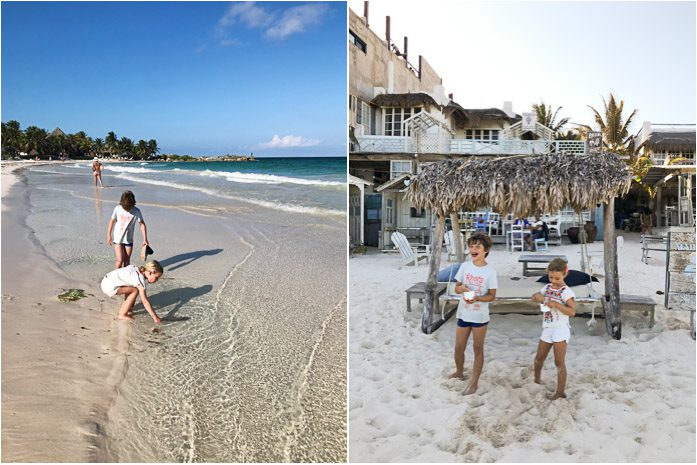

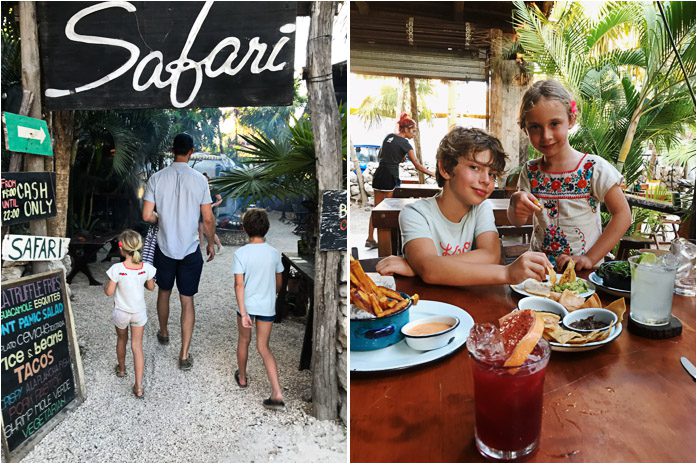
For dinner, we ended up across the road at Safari, a typically boutiquey little taco spot that drew us in with the promise of smoked-meat tacos and an attractive patio with an airstream. It seemed to capture everything that people love and hate about Tulum: it was a perfectly-styled, casual spot, all open and colorful, with some bats flying around as the sun went down. The servers had French and British accents and we learned later that the owner came home to open it after working as a chef at Tacombi in Manhattan. No big surprise, it ended up being one of the more expensive meals on our trip, and it involved a comically upsetting encounter with copal incense smoke blowing into our faces a few times, but the tacos—crispy fish, fire-roasted octopus, and pork pastor—were truly delicious, as well the mezcal-spiked juices.
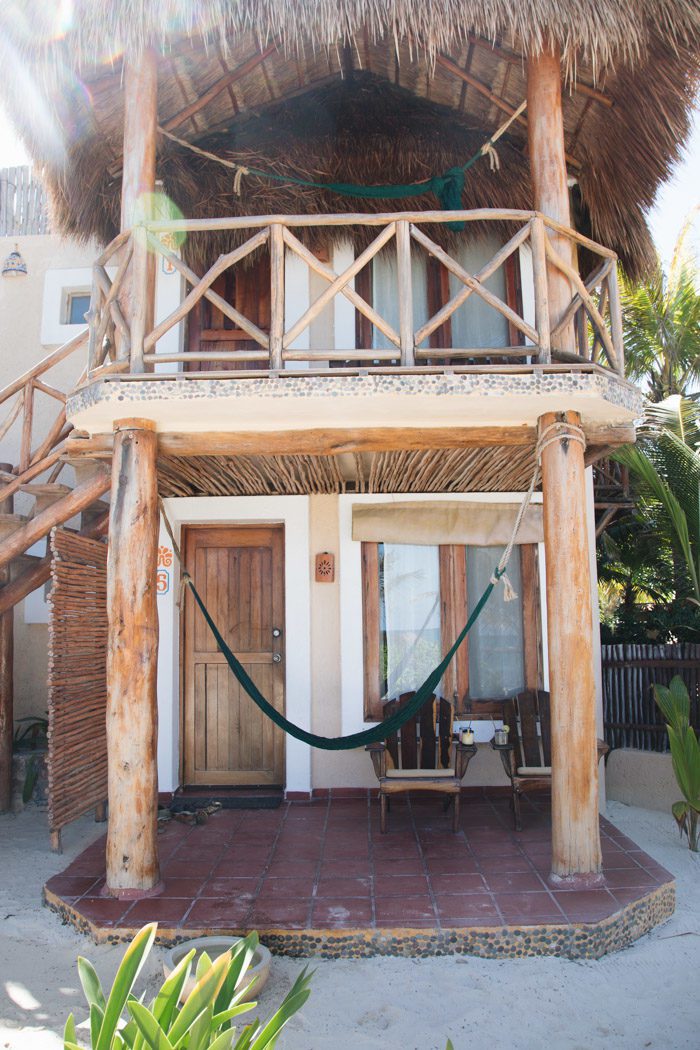

The next morning, we rose with the sun, prepared for a day of exploring. We brought our bags up to the front desk for storing, had a wonderful (if quick) breakfast overlooking the water, and Hudson taught himself to cartwheel in the sand while Skyler adorned her hat with the butterfly clips her grandmother had made. It was honestly a little hard to leave.
But the drive back up the road to Cobá wasn’t too long, and we were excited to see the site. Back home, I’d checked out some books about Mayan Mexico and archaeological discoveries from the library, and we’d watched a Disney Cartoon called The Road to El Dorado which, while Aztec-themed (and over-simplified in its colonial messages)—to help the kids to imagine ball courts and temples in their prime, and I think they were excited, too!
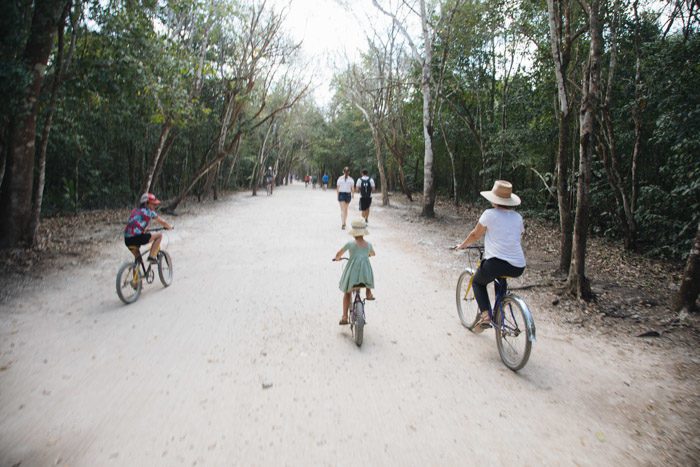
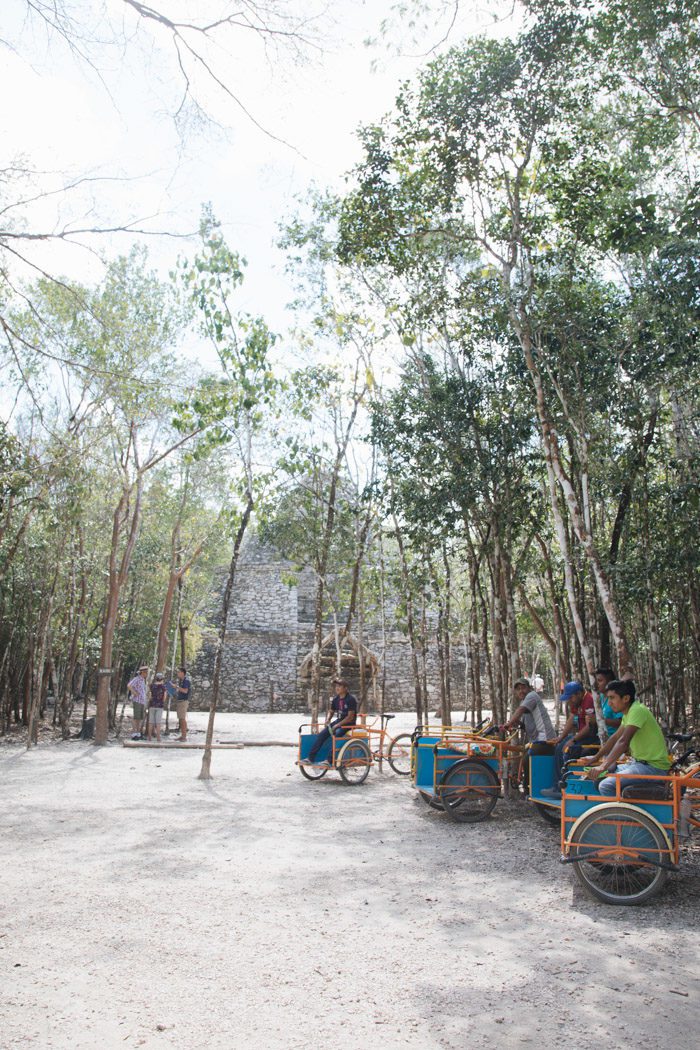
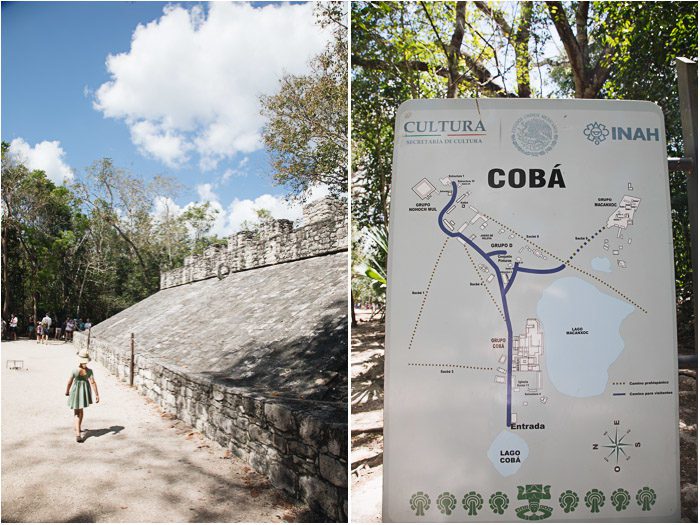
The Mayan City of Coba was first inhabited around 100 AD and was eventually abandoned when the Spanish conquered the peninsula 1400 years later. It is estimated to have had a population of over 50,000 at its peak, and controlled farmland, trading routes, and important water sources all around the region. In other words, it’s an enormous site—most of which has still not been excavated.
We opted to explore on our own, but there are many guides offering services at the entrance to the site and I’m sure this would enhance any visit.
To get around, visitors can walk, hire and bici taxi (like a pedi-cab), or rent a bicycle. We were lucky that Skyler agreed to get a quick lesson in hand-brakes so that we could opt for the latter. As we were choosing our four bikes, we noticed that they were going fast and the line for the bici taxis was growing long—so we did have a sense of urgency about making that decision.

The site features the largest network of stone causeways in the ancient Mayan world, called sacbes (white roads): the raised stone pathways connect clusters of residential areas to the pyramid areas and to small lakes. We followed one through the trees to the largest pyramid first, knowing that it might get more crowded as the day went on. But in general I was struck by how uncrowded the area felt at many times. It’s such a vast site that we often found ourselves practically alone on the paths between the structures.
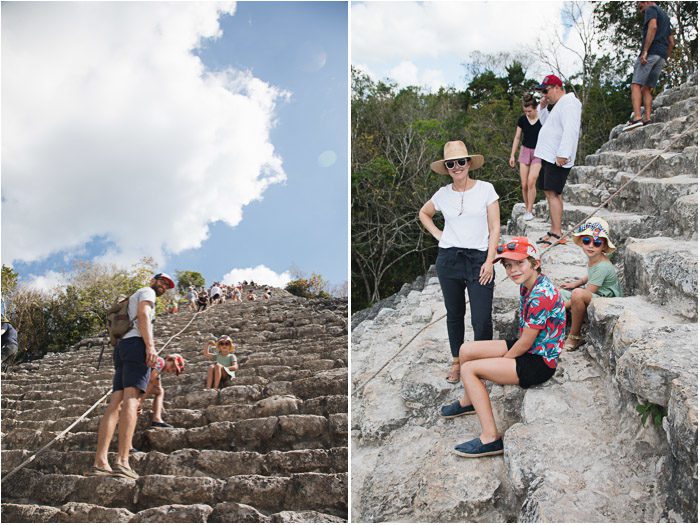

The largest pyramid at Coba is called Ixmoja, part of the Nohoch Mul group of buildings. The pyramid is 138 feet tall, and is still open to climbing. We had some trepidation about watching the kids ascend (and, especially, descend) the steep steps, but had also chose to visit Cobá knowing that they’d appreciate it more with the chance to engage in this way.
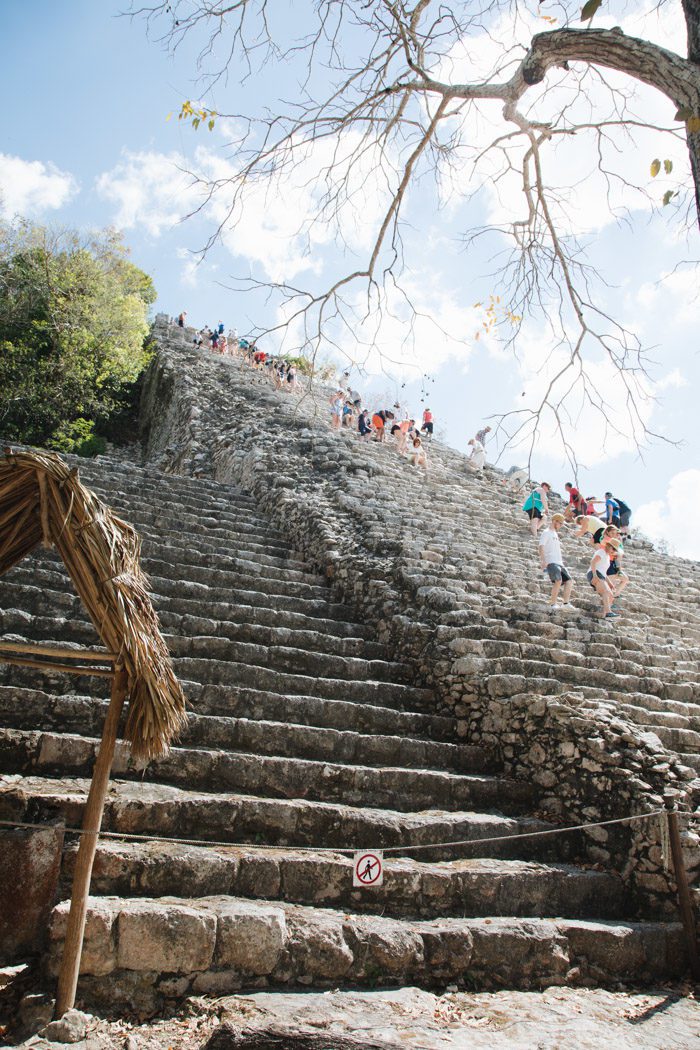
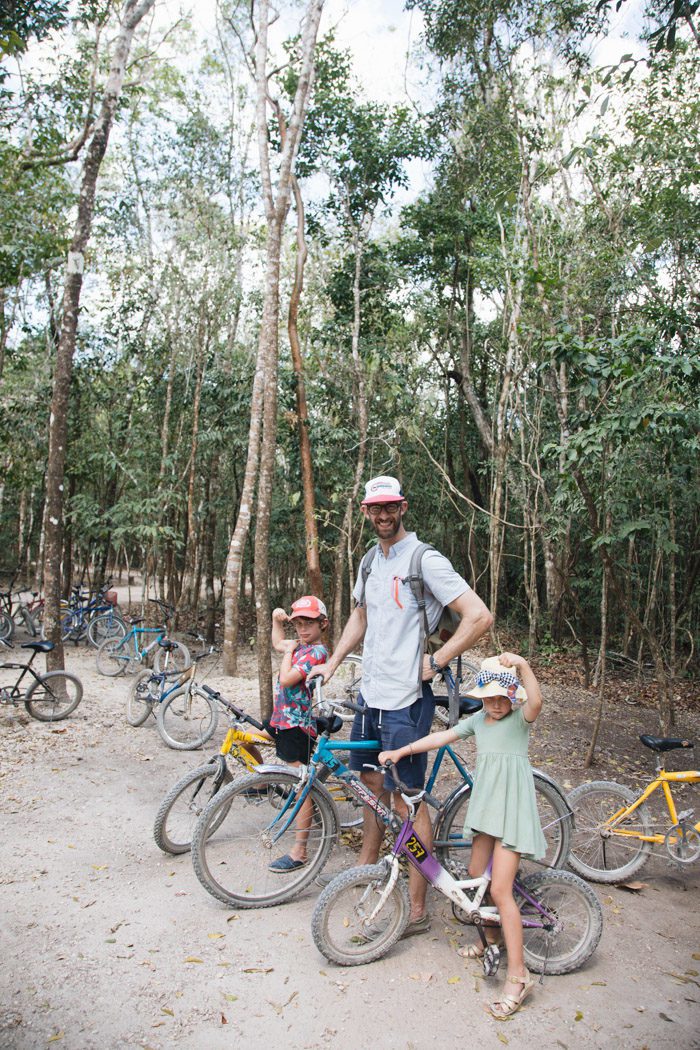
They gave me their best warrior poses after braving the climb—and making it back down safely.
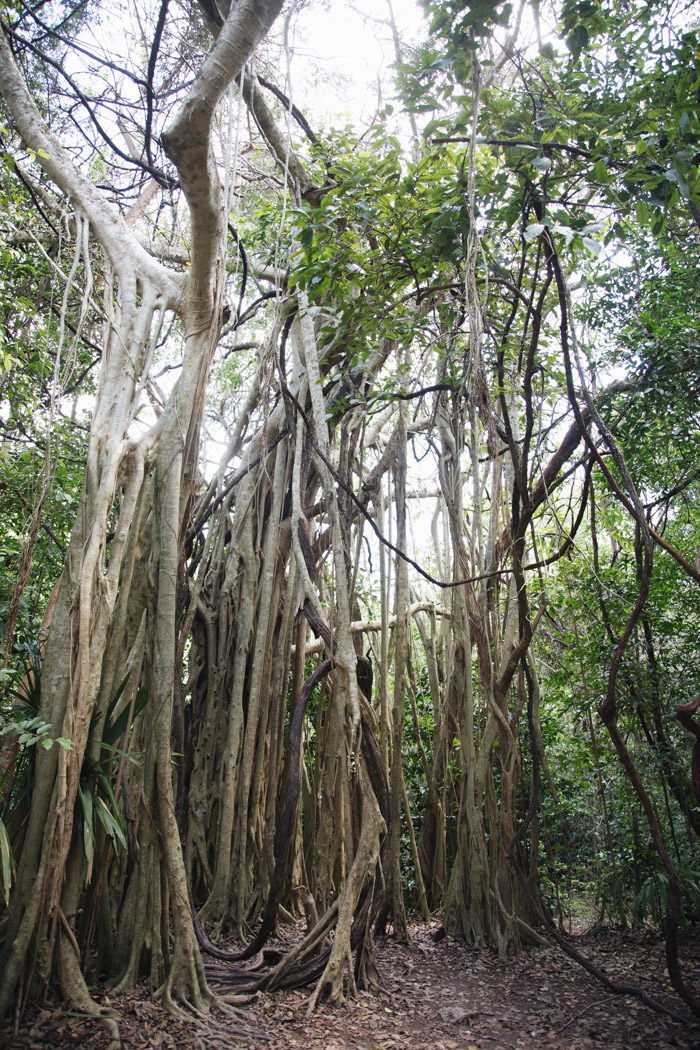

There are many tall stone carved monuments at the complex, called stelae. Some stelae here depict women, suggesting the city had female rulers.
There are two well-preserved ball courts on the site too, used for playing ōllamaliztli, a traditional Mayan ballgame. Specific rules differ depending on the time period, but basically players attempted to bounce a heavy rubber ball through stone rings using their hips.

And there was plenty of wildlife, if you looked closely. We spotted some giant lizards in the brush, bats hanging from the thatched roofs, and some enormous arboreal termite nests. Hudson kept trying to scare Skyler about the possible presence of a jaguar, but the closest we got to that were signs along the road warning motorists to look for them crossing.
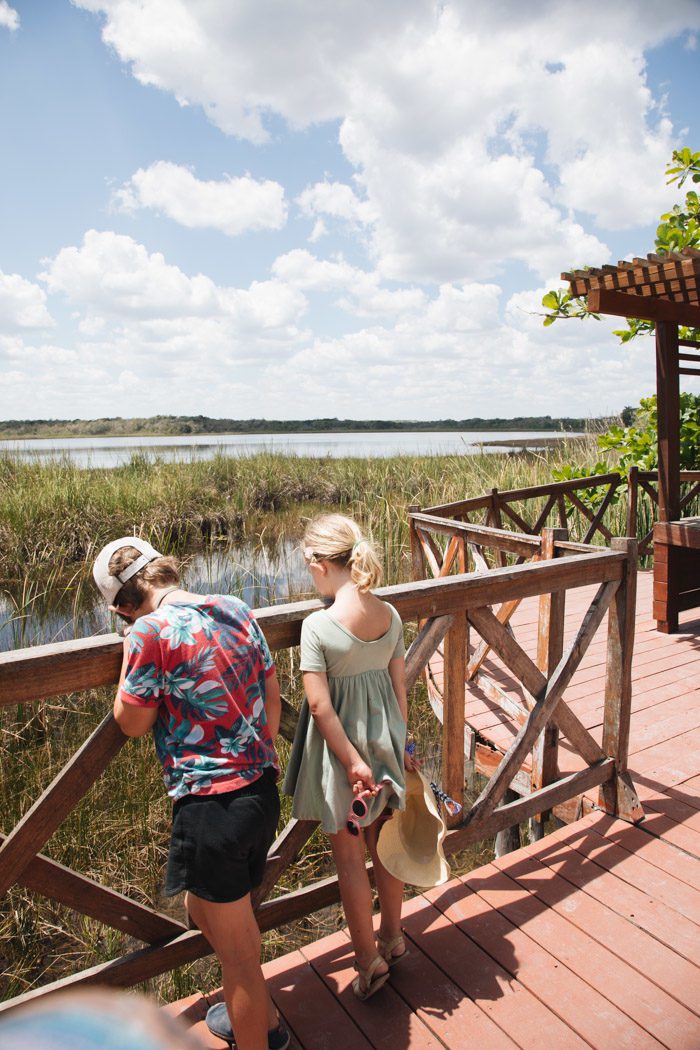

After we’d wrapped up our visit, and before we left for some swimming, we crossed the road outside of the ruins and sat down for lunch at one of the eateries across from the lake—there, we introduced the kids to Fanta and spotted our first crocodiles!
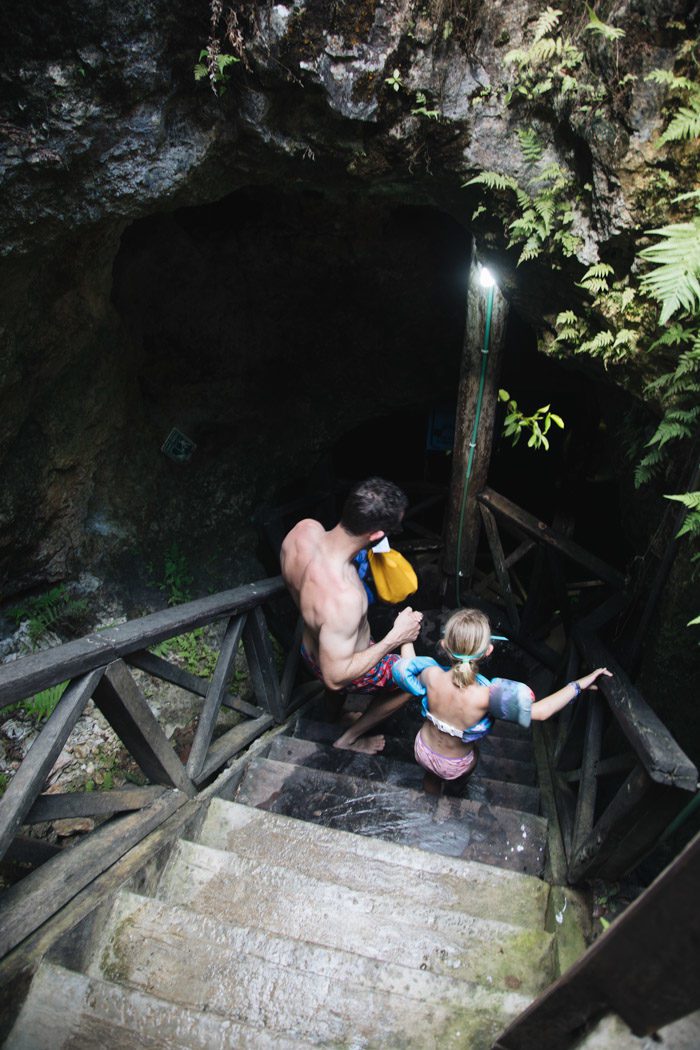
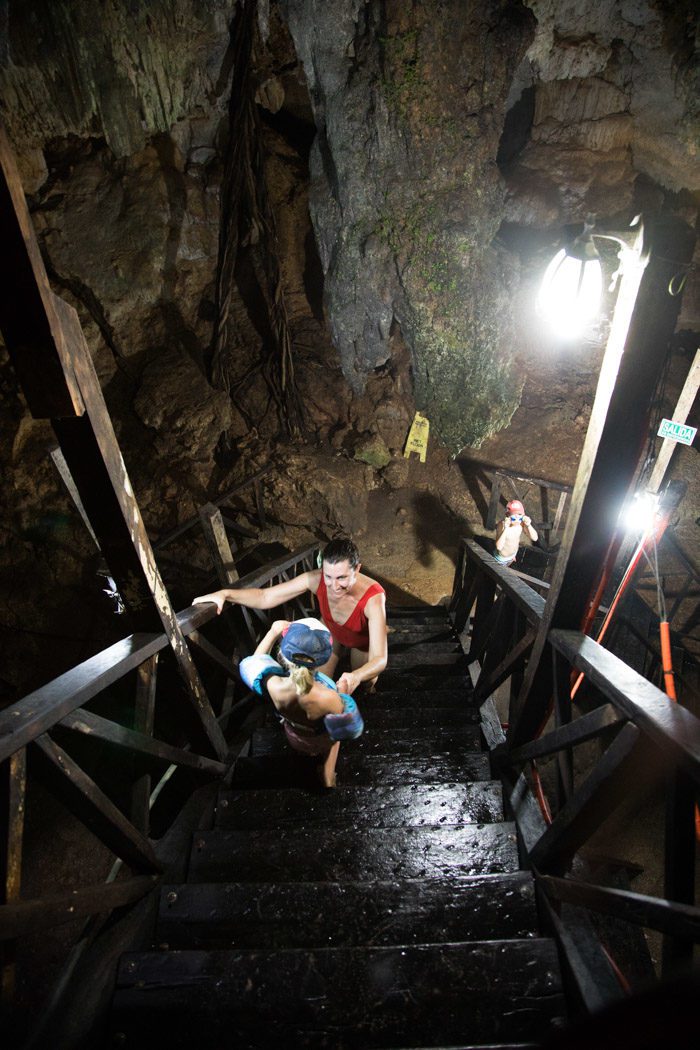
The Yucatán Peninsula’s limestone surface is especially porous, so there are thousands of sinkholes called cenotes, many of which can be visited for swimming, that connect to one of the longest underwater cave systems in the world. They are still exploring the miles of them and finding the most incredible artifacts!
There are three of these cenotes just a 10-minute drive away from the ruins, accessible with an entrance fee. We visited two of them, Cenotes Choo-Ha and Tamcach-Ha. At the first, we walked down the staircase and found a cave with cool, crystal-blue water, and many stalagmites hanging from the ceiling.

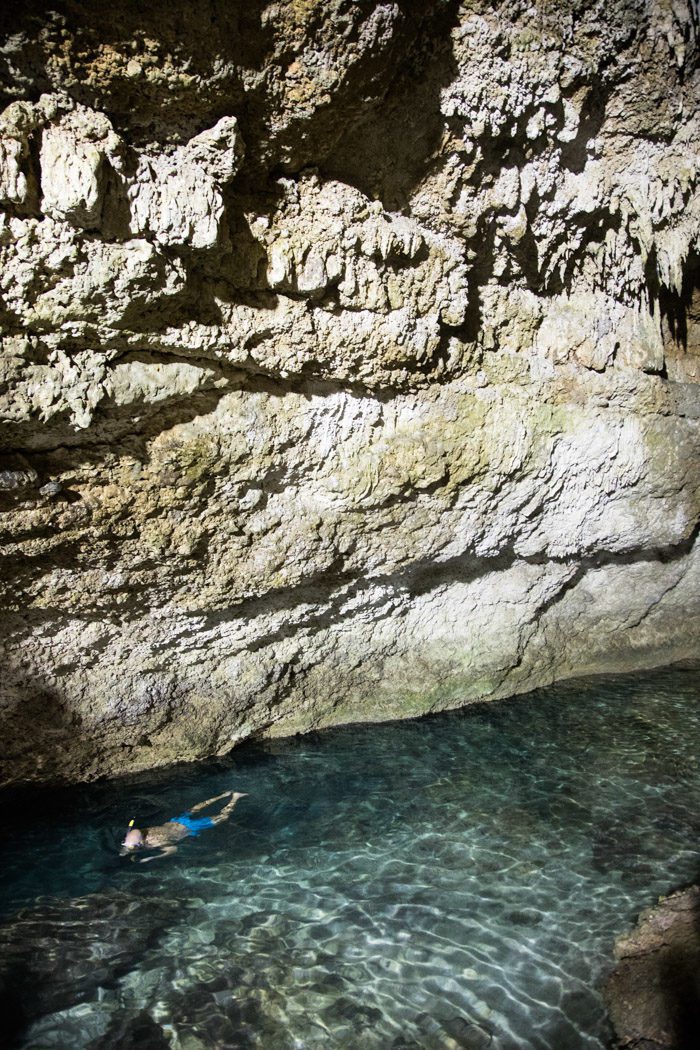
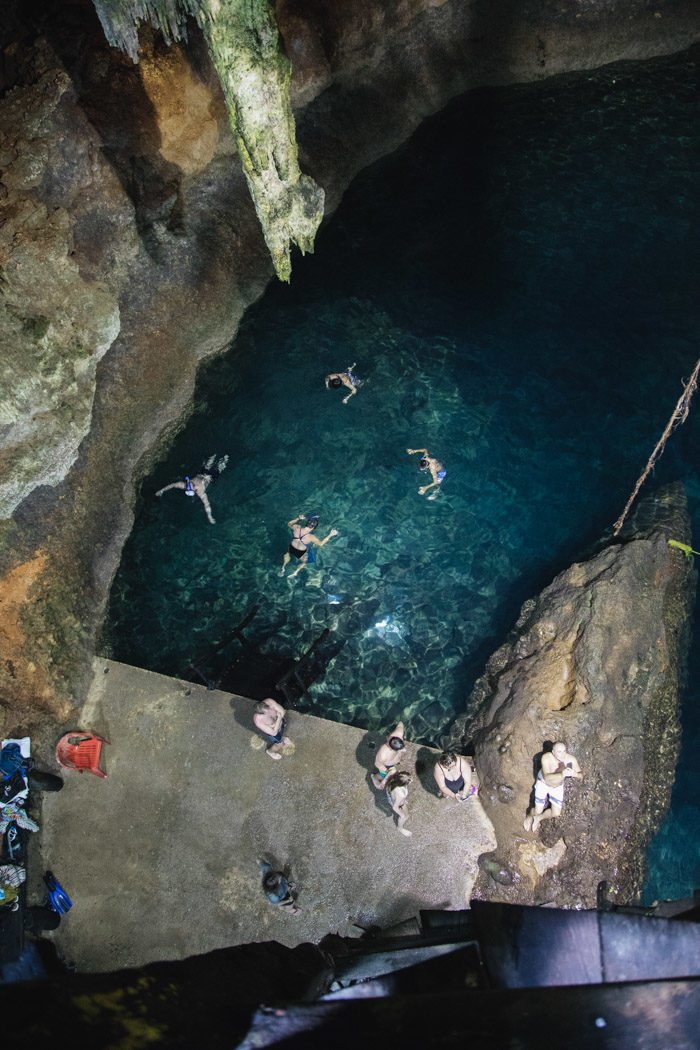
Cenote Tamcach-Ha is a deeper underground cavern, with a much deeper pool and a winding wooden staircase with platforms for jumping at 15 and 30 feet high.
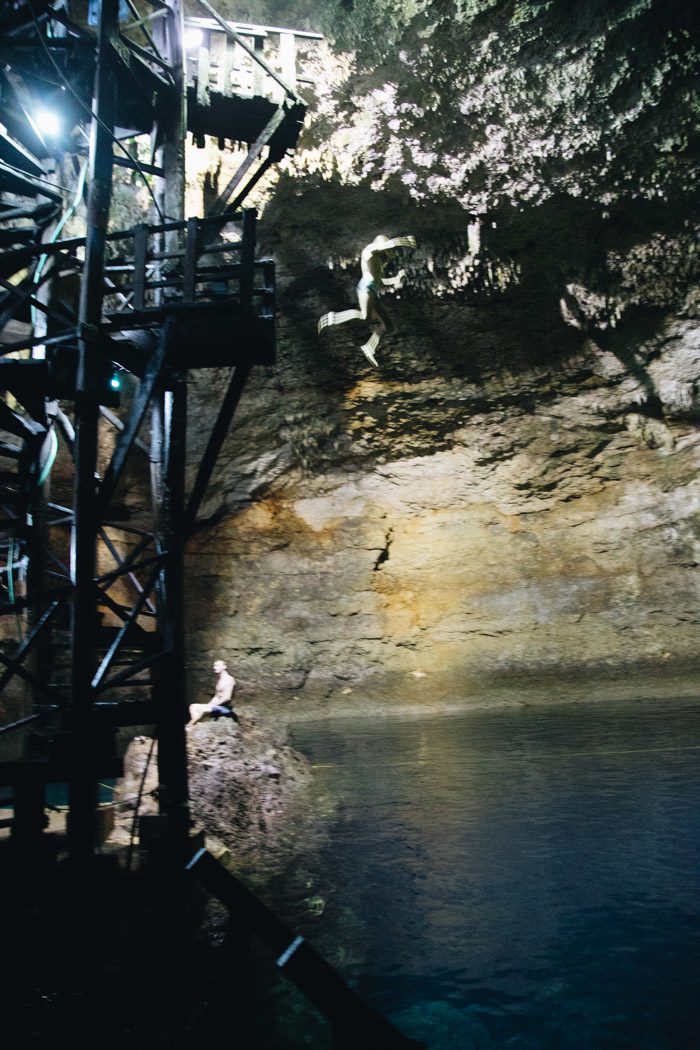
I got vertigo just looking over the edge, but both Hudson and Aron took turns off the lower platform. (I think Hudson did it five or six times over!)
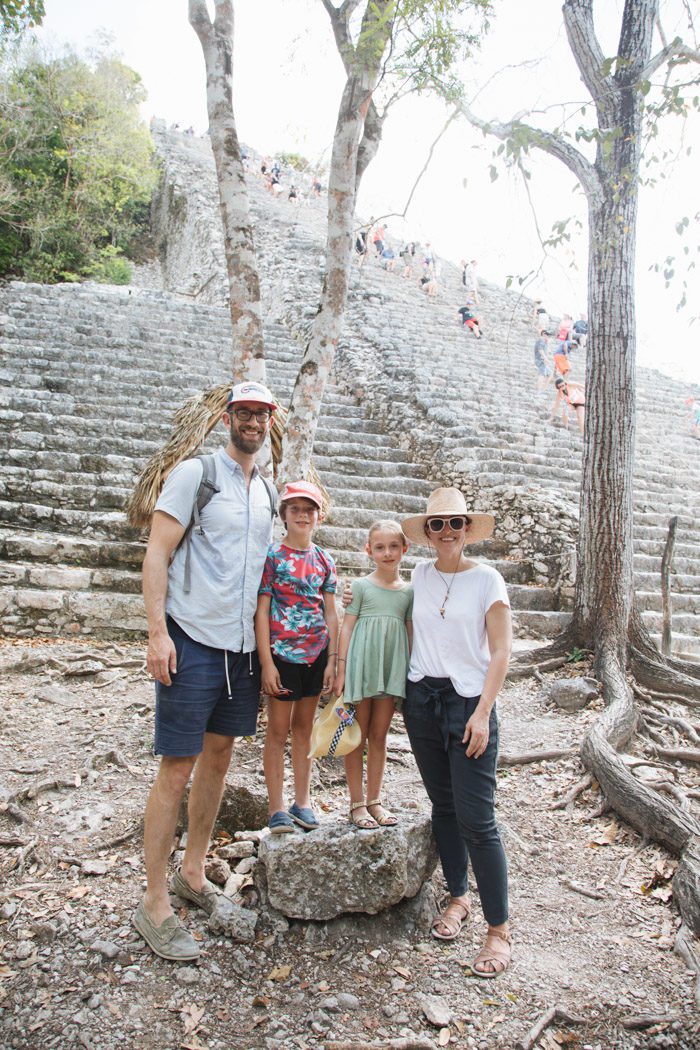
From there we returned to Tulum to pick up our bags and drive on to Mayakoba, but you could easily spend an entire week just exploring the various cenotes and ancient Mayan sites around the peninsula.
Have you perhaps done just that? Which were your favorites?
Previously: Isla de Holbox (& a much earlier Yucatán trip with stops in Merida, Campeche, Isla Mujeres, and Tulum—where we went scuba diving in one of the cave systems!)
Next Up: Fairmont Maykoba


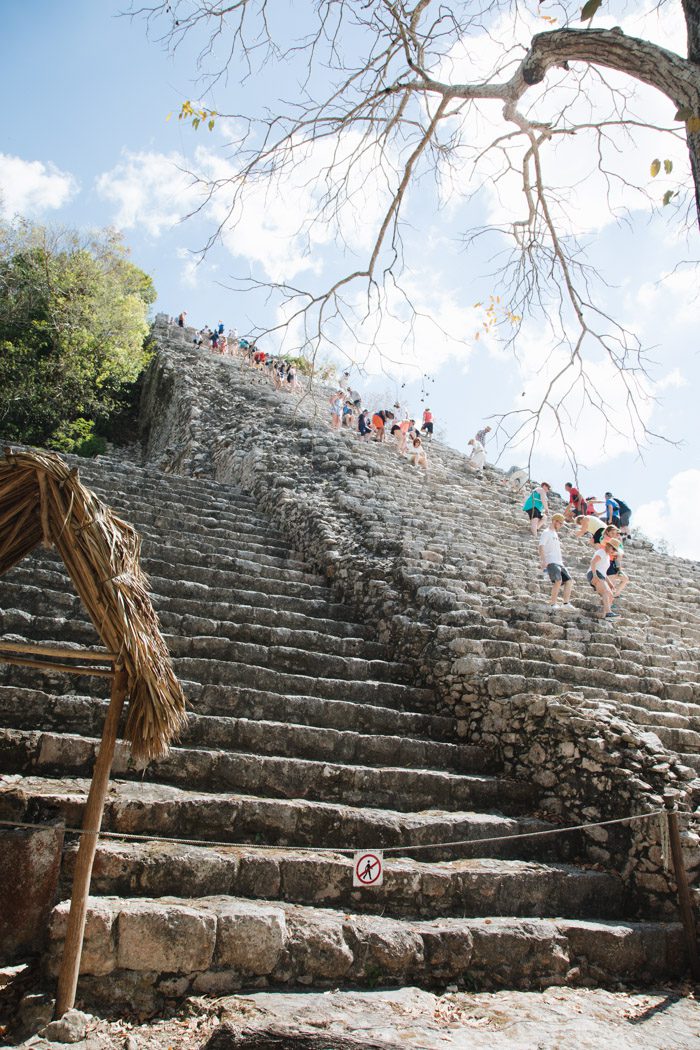
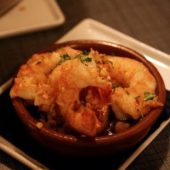
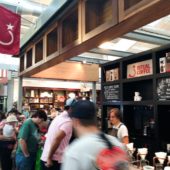
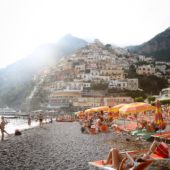
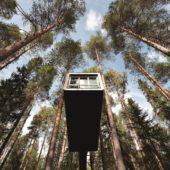










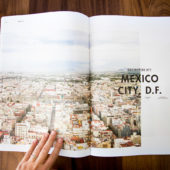

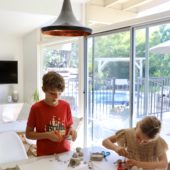


















9 Comments